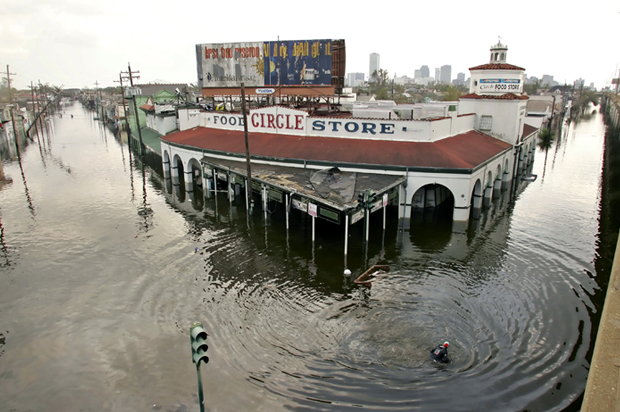At first glance, Hurricane Katrina in New Orleans and the devastating blaze at Grenfell Tower in London last week may not seem too similar. But a closer inspection of the circumstances leading to the two tragedies shows a deep connection to the same capitalist theory: the shock doctrine.
The term shock doctrine, also called disaster capitalism, was coined and researched by Naomi Klein in her 2007 book The Shock Doctrine. The theory describes the rampant corporatization of the public sector, whether it’s schools or housing, in the aftermath of a “shock,” which could come in the form of an economic recession, a terrorist attack or even a natural disaster. Pro-corporate politicians take advantage of the shock and trauma the public experiences when a disaster hits to ram through free market-inspired ideas that strip away the safety net and public services in exchange for corporatization and privatization.
In The Shock Doctrine, Klein uses Hurricane Katrina’s devastation of New Orleans as a case study in disaster capitalism. Just weeks after the hurricane hit, a group of lobbyists (including Vice President Mike Pence) joined together to formulate a package of privatization and corporate policies that would transform the city’s landscape for the worse. Some of these policies included the rise of charter schools and school vouchers for families at the expense of the city’s public school system as well as the handing off of rebuilding destroyed houses to private contractors who caused more harm than good.
This same pattern could occur following the Grenfell Tower fire, which killed at least 79 people and was the deadliest fire in Britain in a century.
In the days following the blaze, British media outlets revealed that the fire was exacerbated by external material that easily catches fire and facilitated the quick and deadly spread of the flames. A report from the New York Times shows that wrapping the flammable material around apartment buildings like the 24-story Grenfell Tower is actually banned in the U.S. and several European countries. Yet builders still applied the cladding around Grenfell because of a cost-cutting deal made with British politicians; it was determined at the time that the cost concerns outweighed the safety risks posed by the hazardous material.
But the scaffolding was not the only factor contributing to the fire. Grenfell Tower also lacked basic precautionary measures, such as fire alarms, sprinklers and fire escapes. The building contained only a single staircase for its residents. For years, residents of the tower complained and warned authorities about the potential catastrophe awaiting the public housing building. Many residents also charge that the new flammable scaffolding was installed to beautify the building for adjacent, wealthier neighbors.
This failure to care for Grenfell residents, most of whom are among the area’s poorest, resembles the U.S. government’s neglect of New Orleans, which multiplied the disaster caused by Hurricane Katrina.
Katrina was classified as a Category 3 hurricane once it hit the Gulf Coast, bringing winds up to 100-140 mph. Because New Orleans lies below sea level, it faced particular risks from the hurricane. A system of levees built over the course of the 20th century was supposed to protect the city from mass flooding. However, the levees built to protect neighborhoods from Lake Pontchartrain, Lake Borgne and nearby swamps and marshes were less reliable and weaker than other levees along the Mississippi River. These areas also housed the city’s poorest residents, a majority of whom were black.
For many years, public officials warned about the weakness of the levees and the potential for catastrophic damage if they could not sustain a powerful storm. But the levees were never fixed. The combination of the strength of the storm and the weakened fortification ultimately caused billions of dollars in devastation and the displacement of hundreds of thousands of people following the storm.
The buildup to both the Grenfell Tower and Hurricane Katrina disasters poses striking similarities. Gross government oversight and a lack of urgency for protecting poor residents and people of color resulted in devastating disasters that killed many and displaced many more. With Grenfell Tower now in charred ruins, private contractors and money-hungry lobbyists and public officials may see the tragedy the same way Pence and his team of lobbyists viewed the aftermath of Katrina: a grand opportunity for capitalist privatization for the benefit of the rich and at the expense of the poor.


